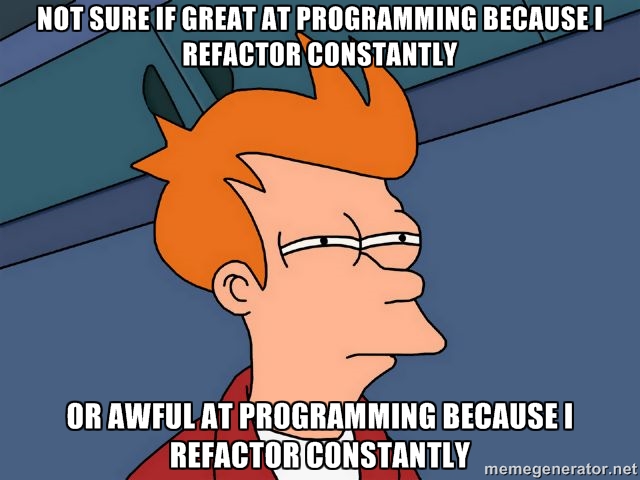Code Refactoring 10 Lessons I Learned on Improving Code
Code Refactoring: 10 Lessons I Learned on Improving Code #
Excerpt #
We shared some useful tips for code refactoring to make the codebase readable for a professional programmer.
As a software engineer, I enjoy keeping code clean and easy to work with. I have a habit of breaking down complex problems into simple, manageable parts. Whether it’s through regular maintenance or tackling new features, I’m here to keep things running smoothly. That’s why Code Refactoring is necessary!
Code Refactoring means changing the way code is written without changing what it does. It’s like cleaning up your code; not to add new features, but to make it easier to read and maintain. By doing this, the code becomes easier to understand and work with, and it helps avoid hard-to-manage code in the future.

When to refactor code? While it’s super helpful, refactoring isn’t something to do randomly. Do not beg for extra hours or days to do refactoring. This is one of the big no-nos for a software engineer. If possible, make it a part of your feature implementation.
“Refactoring during development is the best chance you’ll get to improve your program, to make all the changes you’ll wish you’d made the first time.”
Steve McConnell (from ‘ Code Complete‘ book)
If not possible, you can refactor during regular maintenance also to keep things running smoothly, before adding new features to ensure everything fits nicely and avoids extra mess.
Here are some things we programmers should keep in mind about Refactoring, especially if you are new to it.
1) Analyze the Code #
Before diving into refactoring, I thoroughly analyze the code. I need to understand what each part does and how it interacts with other parts. This initial step is crucial because it helps me spot areas that need improvement and ensures I don’t accidentally break anything during the process.
2) Refactor as a Team #
Refactoring is best done as a team effort rather than a solo job. Different team members bring different perspectives and can catch issues that I might miss. Collaborating with others also makes the process more efficient and thorough, ensuring a higher-quality result.
3) Composing Methods #
Breaking down complex code into smaller, more manageable methods is essential. Smaller methods make the code easier to read, understand, and maintain. They also simplify testing and reuse in different parts of the application, which contributes to a cleaner codebase.

4) Simplifying Conditional Expressions #
Simplifying conditional expressions is crucial for readability. Complex if-else statements can be confusing and error-prone, so I aim to make them as straightforward as possible. This reduces the chance of errors and makes the code easier to follow and maintain.

5) Extract Method #
When I see a chunk of code that performs a specific task, I extract it into its method. This not only makes the main code cleaner but also makes the extracted method reusable. It’s a great way to improve clarity and reduce code duplication.
6) Ensure You Understand Your Code #
Before making any changes, I make sure I fully understand the code. This helps prevent introducing new bugs and ensures that my refactoring efforts are effective. Knowing what the code is supposed to do before tweaking it is crucial for successful refactoring.
7) Set Clear Objectives #
Setting clear objectives for the refactoring process helps keep me focused and on track. Whether the goal is to improve readability, and performance, or reduce technical debt, having a clear target ensures that my efforts are aligned with the overall needs of the project.
8) Incremental Changes #
I prefer making incremental changes rather than overhauling everything at once. Small, incremental changes minimize risk and make it easier to track progress and troubleshoot issues. This approach also makes the process less overwhelming and more manageable.
9) Performance Considerations #
While refactoring, I also keep an eye on performance. Optimizing code for performance ensures that it runs efficiently and effectively. Balancing readability and performance is key to achieving a well-rounded and high-quality codebase.
10) Code Readability #
Improving code readability is always a priority. Readable code is easier to understand, maintain, and debug. By refactoring to improve readability, I make it easier for myself and others to work with the code in the future.
Conclusion #
To cut a long story short, refactoring is about making code cleaner and easier to work with, not adding new features. By focusing on readability and performance, I ensure our codebase stays efficient and manageable. This way, we keep things running smoothly and are always ready for new challenges.